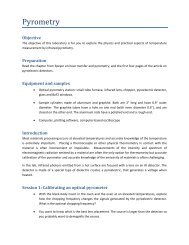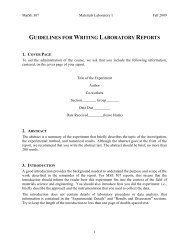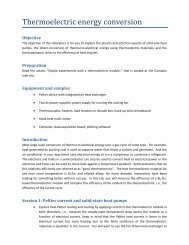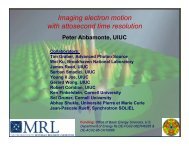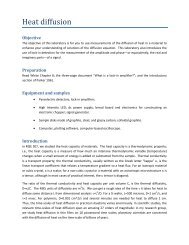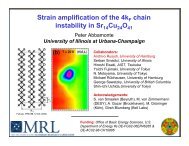Pushing the boundaries of the thermal conductivity of materials
Pushing the boundaries of the thermal conductivity of materials
Pushing the boundaries of the thermal conductivity of materials
You also want an ePaper? Increase the reach of your titles
YUMPU automatically turns print PDFs into web optimized ePapers that Google loves.
Conclusions<br />
• Difficult to take advantage <strong>of</strong> superlative properties <strong>of</strong> carbon<br />
nanotubes because <strong>of</strong> "<strong>the</strong>rmally weak" interfaces.<br />
• Can beat <strong>the</strong> amorphous limit to <strong>the</strong> <strong>the</strong>rmal <strong>conductivity</strong><br />
with high densities <strong>of</strong> interfaces.<br />
• Incredibly low <strong>the</strong>rmal <strong>conductivity</strong> (far below <strong>the</strong> amorphous<br />
limit) in <strong>the</strong> disordered, layered crystal WSe 2.<br />
– Combination <strong>of</strong> disorder (random stacking <strong>of</strong> sheets) and<br />
anisotropy (large differences in vibrations within and<br />
across <strong>the</strong> sheets) appears to be <strong>the</strong> key<br />
– Can we reproduce this physics in <strong>materials</strong> with good<br />
electrical <strong>conductivity</strong> for <strong>the</strong>rmoelectric energy<br />
conversion?<br />
– Can we reproduce this physics in refractory oxides for<br />
<strong>the</strong>rmal barriers?





